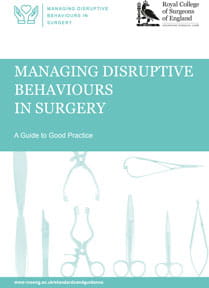Managing disruptive behaviours in surgery

Managing disruptive behaviours can be a challenging area, involving difficult conversations, often about sensitive matters, with sometimes testing individuals. However, failure to confront and actively manage disruptive behaviours allows them to continue, with implications for patient care and staff wellbeing.
Intimidating and disruptive behaviours can foster medical errors and cause significant and unnecessary distress to colleagues. They undermine the trust of both patients and the public. This guidance aims to provide advice and support to surgeons on how to identify such behaviours, how to prevent them and how to address them through a series of graduated interventions.
Who is this guide for?
This guide is intended for all surgeons and members of the surgical team. It provides practical guidance for surgeons with formal leadership roles, such as medical directors, divisional directors, clinical directors and clinical leads. These surgeons are collectively referred to in this document as ‘clinical leaders’.
It also provides advice to surgeons who lead teams, as well as individual surgeons who experience disruptive behaviours in a team member or colleague and are uncertain how to respond.
In addition, it can be useful for individual surgeons who have received feedback that they have demonstrated disruptive behaviour, or a pattern of behaviour that others have found difficult or uncomfortable.
What can I learn from this guide?
This guide gives a clear definition, key characteristics and examples of disruptive behaviours. It outlines the usual causes for disruptive behaviour and the impact it can have on patient care and on the surgical team. It recommends a series of interventions for dealing with disruptive behaviours. Finally, it sets out a list of expected behaviours of all surgeons.

